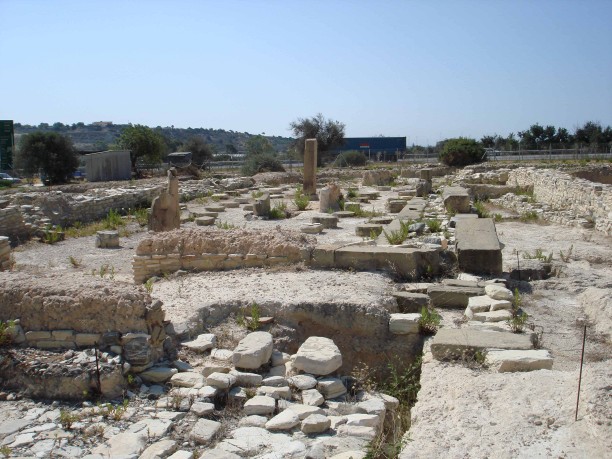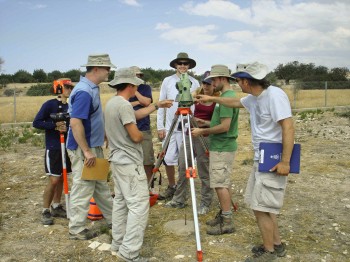ARTS AND HUMANITIES

Part of the building complex at Kalavasos-Ayios Dhimitrios, Cyprus (14th-13th century B.C.). Cornell and Ithaca College researchers will map and study the city and surrounding towns.

Members of the Cornell-Ithaca College team of researchers in Cyprus. See larger image
Collaborative team to uncover architecture, social life in ancient cities on Cyprus
A Cornell-Ithaca College team of interdisciplinary researchers will use 21st-century technology to study relationships among architecture, social interaction and social change in an early civilization on Cyprus that rose and fell more than 3,000 years ago.
The team — including Sturt Manning, the Goldwin Smith Professor of Classical Archaeology; Cornell postdoctoral researcher Kevin Fisher, a specialist in late Cypriot architecture and urban planning; IC physicist Michael Rogers; and undergraduate and graduate students — will combine social archaeology with physics, environmental psychology, architecture, planning and urban geography to study Kalavasos-Ayios Dhimitrios and Maroni, two major Late Bronze Age sites.
During the Late Bronze Age (ca. 1650-1100 B.C.), the once insular, egalitarian, village-based society on Cyprus became a cosmopolitan civilization central to international trade in the eastern Mediterranean. New cities may have played a role in solidifying power among an emerging political elite, Manning says, but the dynamics of the transformation are still not well understood.
Partial excavations on Cyprus have yielded some answers about the cities, "but we know almost nothing of the surrounding towns," he says.
With advancements in archaeological geophysics, researchers can investigate ancient urban sites by detecting buried walls, streets and other architectural features without large-scale excavation. The project and the methods used will also enhance the infrastructure for scientific research while providing experiential learning opportunities for students.
The Kalavasos and Maroni Built Environments Project is being funded with $107,570 from the National Science Foundation (NSF) to Cornell and $60,638 to IC, benefiting from the American Recovery and Reinvestment Act (ARRA).
Beginning this spring, the researchers will conduct three four-week periods of geophysical survey at the two sites with equipment obtained through a previous NSF grant to Ithaca College. Using a ground penetrating radar survey, electrical resistivity sensors and a proton geomagnetometer, the team will be able to survey 20-30 hectares at a time, gathering data on the cities and the surrounding landscape, Manning says.
"You cover every square inch," he says. "The hits tell you where things are and even at what depth. It's very labor-intensive, but if you compare that to moving thousands of cubic meters of soil, it's much easier."
Digital mapping, 3-D modeling of previously excavated architecture and analytical methods will allow researchers to assemble complete urban plans of the sites and significantly expand the data on Late Bronze Age architecture.
"The currently known areas are merely a small part of a highly complex prehistoric landscape, and we hope to be among the first to start to explore their overall story," Manning says.
The four-year collaborative project will result in peer-reviewed journal publications, conferences, public lectures and a Web site featuring a geographic information system (GIS)-based architectural and archaeological database.
Manning, director of the Malcolm and Carolyn Wiener Laboratory for Aegean and Near Eastern Dendrochronology based in Goldwin Smith Hall, took a team to Cyprus in 2008 to conduct preliminary field tests for this project.
There are hundreds of archaeological sites on Cyprus, but modern development is encroaching on many of them, Manning says. "We'll have access to about 85 percent of the two major sites we will study. Cyprus is being very rapidly developed and is a prime tourist destination. The landscape for this project may not be available in 20 or 30 years' time. We are seeking information before it is lost."